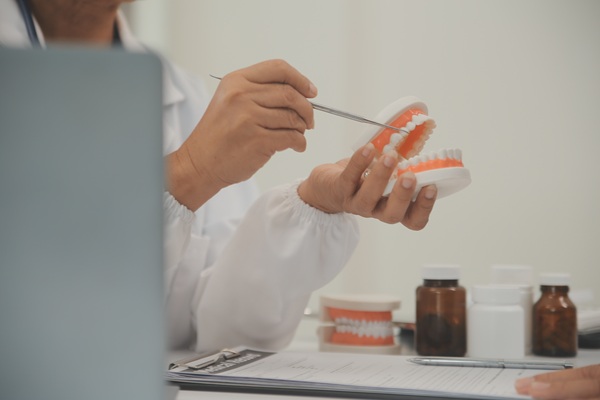How a Wisdom Tooth Extraction Is Done
is often necessary in order to promote good oral health. The procedure can be daunting to some; however, the result is a healthier oral cavity, thus ensuring better overall health.
Because wisdom tooth extraction is an involved procedure, it can be helpful to know what to expect beforehand. This allows for the opportunity to prepare appropriately, ask questions, and go over concerns.
The steps of a wisdom tooth extraction
Outlined below are the steps of a wisdom tooth extraction. Keep reading to find out more!
1. Anesthesia
Before a wisdom tooth extraction is performed, the dentist will apply anesthesia. Anesthesia is needed in order to promote numbing, reduce the ability to feel discomfort, and ease anxiety regarding the procedure. Anesthesia may be administered intravenously or via injection, depending on the severity of the extraction.
2. The removal
After anesthesia is applied, the dentist will remove any area of bone that may be blocking access to the wisdom tooth. For example, if the tooth is impacted in the jaw or behind other teeth, certain areas of hard tissue may have to be removed.
Once the wisdom tooth is accessible, the dentist will use a dental drill to divide it into sections. Dividing the wisdom tooth into sections allows for easier removal. Once divided, a tool called an extraction forceps is used to actually extract the tooth.
3. Disinfecting
After the tooth is removed, the area has to be cleaned out. Similar to a filling or crown, when the damaged parts are removed, the empty space in the tooth must be cleaned out. The same goes for wisdom tooth extraction. When the tooth is taken out, there is an empty space that will have to heal. In order to ensure proper healing, the area has to be disinfected so that bacteria do not grow and spread.
Disinfecting involves cleaning out the empty space with a water stream and gentle disinfectant solution. This part of the procedure does not take long at all; however, it is one of the most important steps.
4. Closing
The last part of a wisdom tooth extraction is closing, which involves stitching the open wound shut to prevent debris from entering. In some scenarios, the wound may be small enough that stitches are not necessary; however, that is rare. After stitches are placed, the dentist will place oral gauze to control bleeding and promote clotting. Gauze is often necessary even after the patient returns home, as bleeding usually lasts for a few hours. It is advised to change the gauze every hour or so to ensure cleanliness.
Prepare for a wisdom tooth extraction
When looking for more information on wisdom tooth extraction, it is best to consult directly with a dentist. The dentist can outline any patient-specific steps, which may differ slightly from those listed above. Additionally, preparation tips can be provided, which can quite helpful to review and consider beforehand. To find out more, reach out today!
Request an appointment here: https://www.swisherdental.com or call Swisher Dental at (940) 341-2017 for an appointment in our Corinth office.
Check out what others are saying about our dental services on Yelp: .
Related Posts
A broken tooth can happen at any time — during sports, while eating, or from an unexpected fall. Regardless of the cause, an emergency dentist can help. Through prompt treatment, these dental providers offer an effective way to relieve pain and protect oral health. An emergency dentist can also help prevent complications like infection, nerve…
Are you considering undergoing teeth bleaching treatment from a general dentist? White teeth make for an attractive smile, and choosing to undergo professional treatment supports safe and long-term results. When preparing for a teeth bleaching treatment, it is best to ask questions and consider the pros and cons. Consultation appointments are informative and allow patients to…
An estimated 22 million Americans have sleep apnea, and well over half of individuals with obstructive sleep apnea have a moderate to severe case. A general dentist studies and understands why sleep apnea occurs and can effectively treat it with oral appliances and other treatment methods. Sleep apnea is a common condition in which the airway…
Dental veneers are a great way to enhance a smile, offering a bright, even appearance that lasts for years. However, they are not meant to last forever and may need to be replaced after a certain amount of time. Knowing when veneers show signs of wear and tear can help keep oral health and smile…
